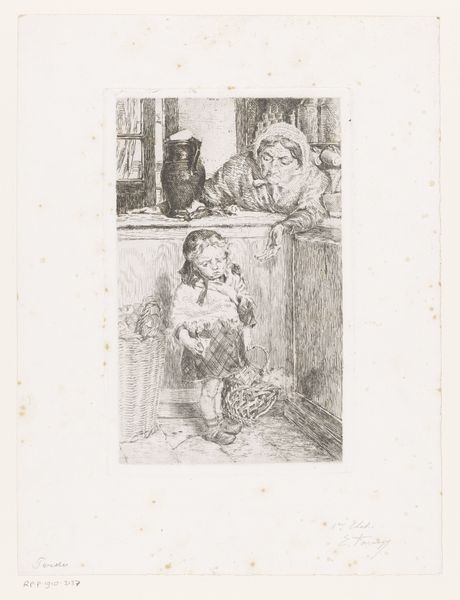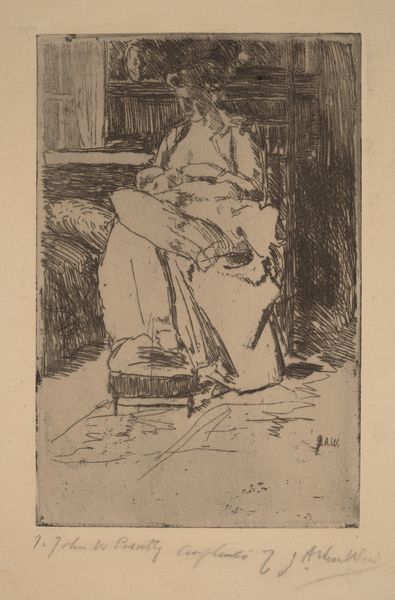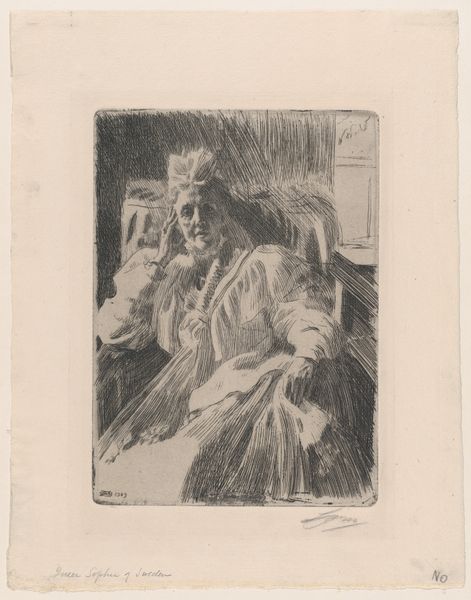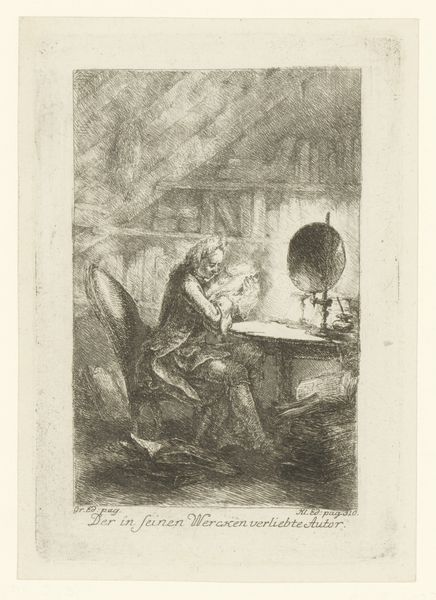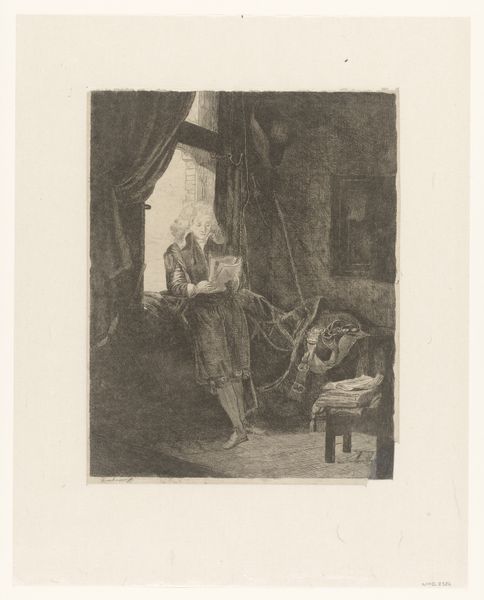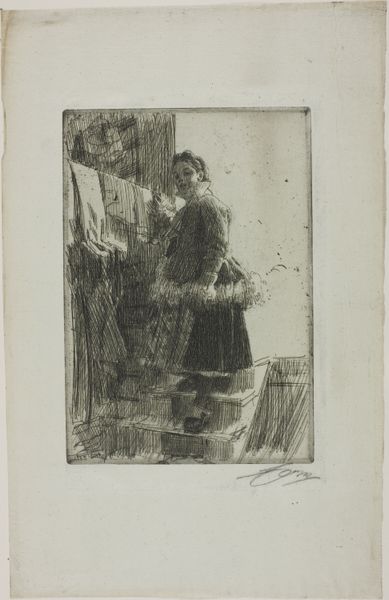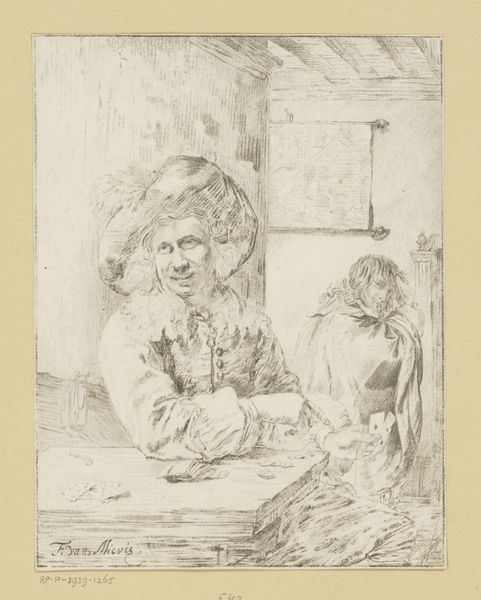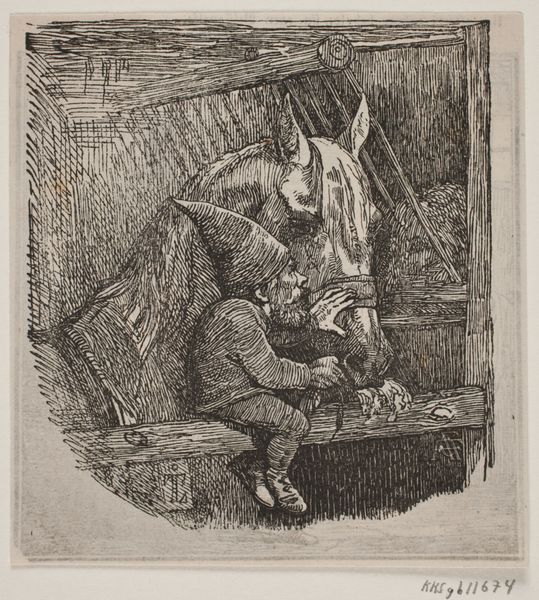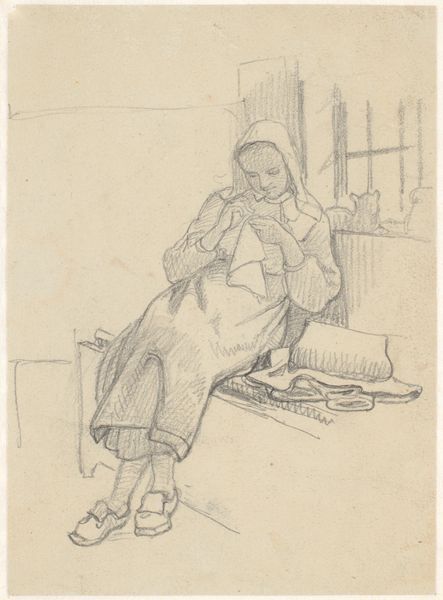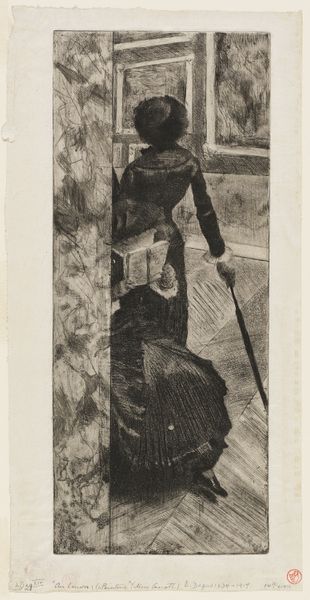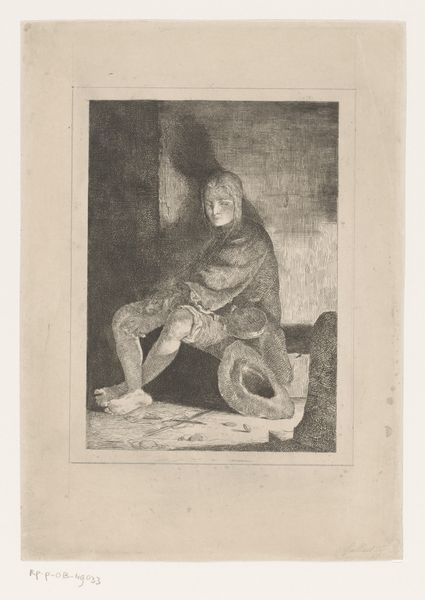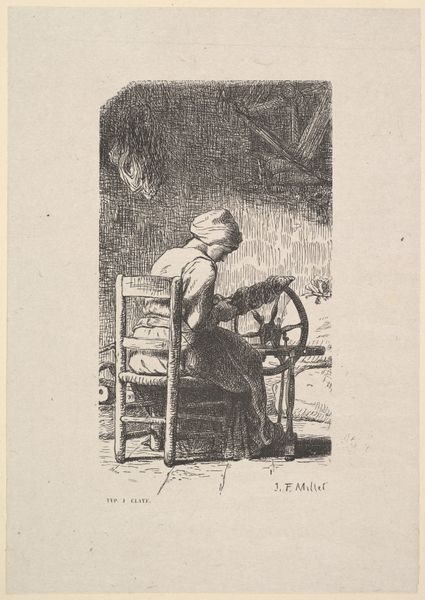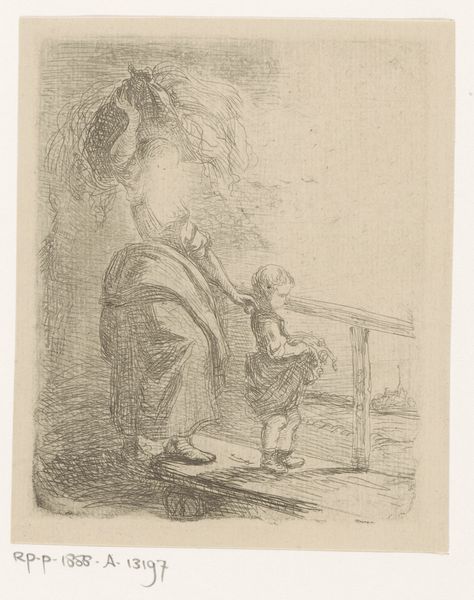
print, etching
#
dutch-golden-age
# print
#
etching
#
folk-art
#
genre-painting
#
realism
Dimensions: height 185 mm, width 133 mm
Copyright: Rijks Museum: Open Domain
Editor: Here we have "Woman at a Spinning Wheel" by Willem Adrianus Grondhout, likely created sometime between 1888 and 1934. It's an etching, and it feels incredibly intimate despite its somewhat rough texture. What visual elements stand out to you the most? Curator: The strategic placement of the spinning wheel immediately arrests the gaze, doesn’t it? Note how the wheel's circular form sharply contrasts with the linear background, almost dissecting the pictorial space. The foreground, a nexus of hastily etched lines, provides a stark textural counterpoint to the relatively smoother treatment of the figure's face. Editor: Yes, that contrast is really effective! It’s almost like the artist is making us consider the interplay between the concrete, the spinning wheel, and the more ephemeral aspects of life, suggested by the background and the woman. Do you see any philosophical intent behind this formal decision? Curator: Precisely. This composition invites us to meditate on binaries: the geometric versus the organic, texture versus plane, shadow versus light. The figure is largely shrouded in shadow, emphasizing a visual and perhaps existential obscurity. Now, consider the semiotics of the spinning wheel itself. Editor: Right, it's both an object and a symbol, linking domesticity with industry. Do you see realism here? Curator: Realism in its rawest form is about honest representation. Look at the economy of lines etching, the strategic obscuring through shadow. What do you make of this compositional balancing act? Editor: It emphasizes form. It’s not just what’s depicted, but how. Even within seeming simplicity, the strategic interplay creates a deeply compelling statement. Curator: Indeed, art resides as much in what is present as in what is cleverly absent. The art reveals a complex dialogue.
Comments
No comments
Be the first to comment and join the conversation on the ultimate creative platform.
